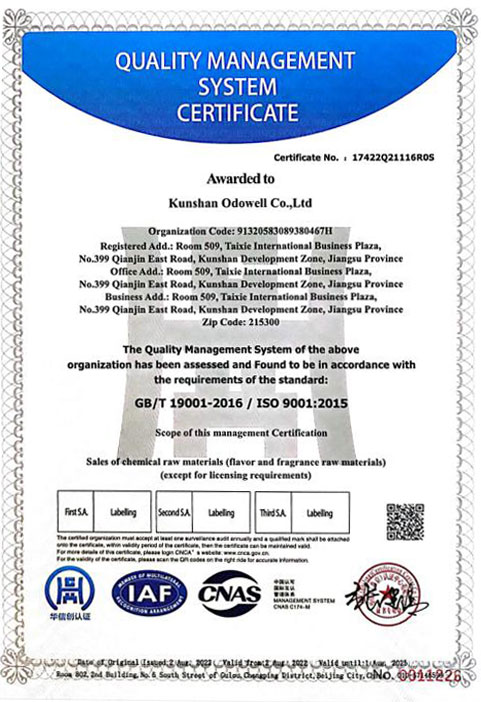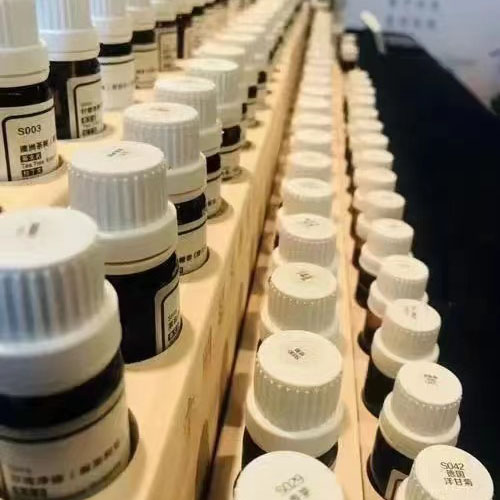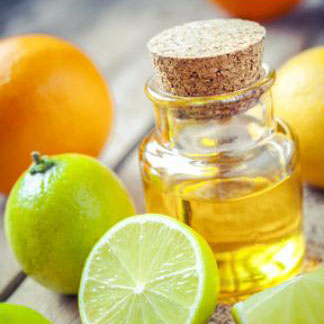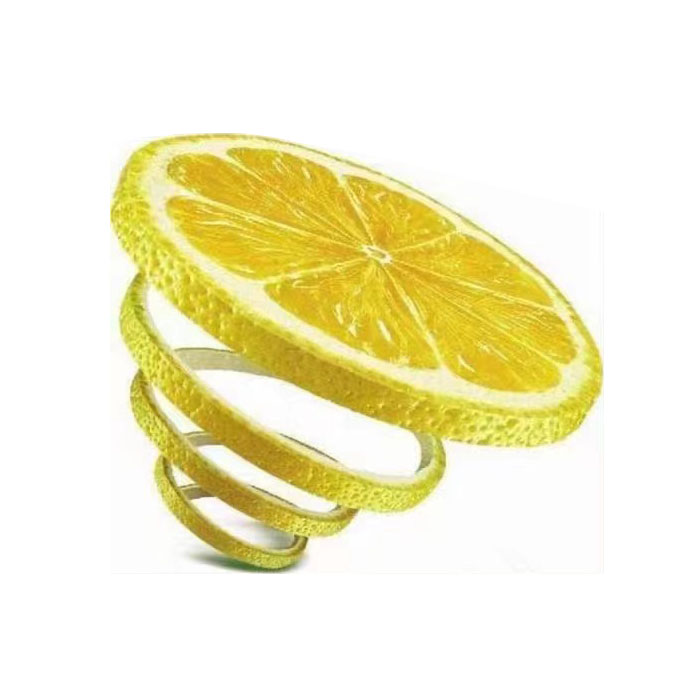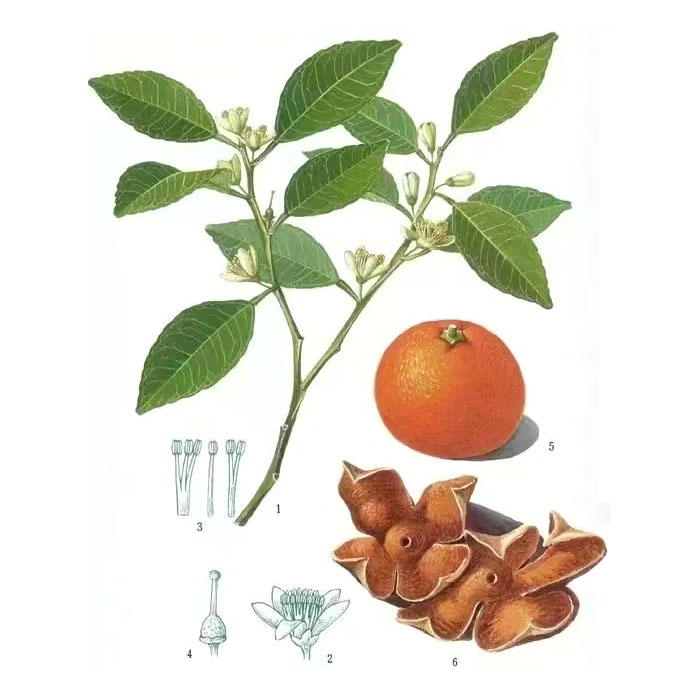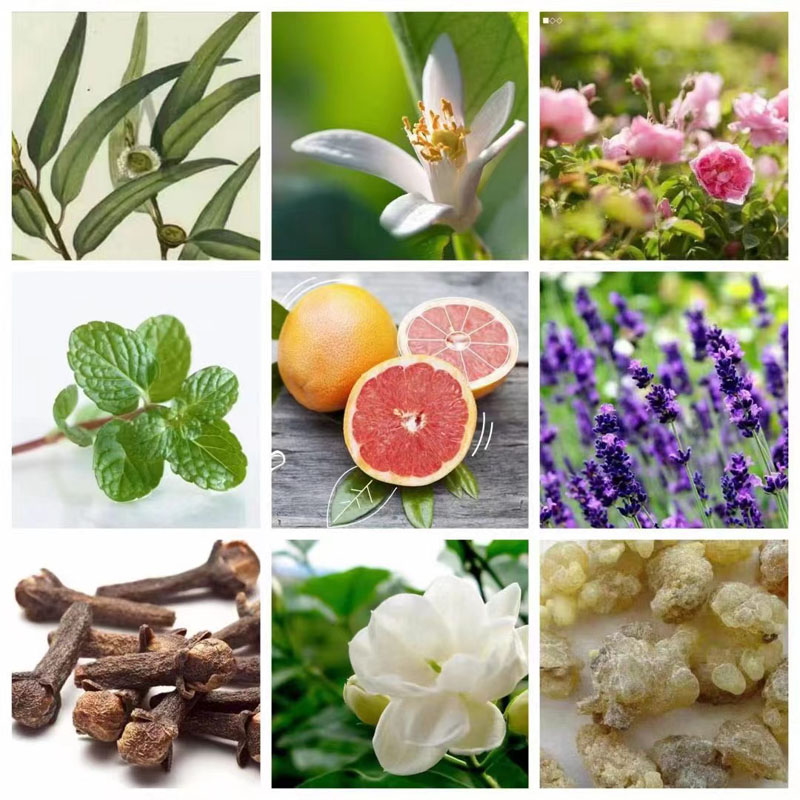- English
- Español
- Português
- русский
- Français
- 日本語
- Deutsch
- tiếng Việt
- Italiano
- Nederlands
- ภาษาไทย
- Polski
- 한국어
- Svenska
- magyar
- Malay
- বাংলা ভাষার
- Dansk
- Suomi
- हिन्दी
- Pilipino
- Türkçe
- Gaeilge
- العربية
- Indonesia
- Norsk
- تمل
- český
- ελληνικά
- український
- Javanese
- فارسی
- தமிழ்
- తెలుగు
- नेपाली
- Burmese
- български
- ລາວ
- Latine
- Қазақша
- Euskal
- Azərbaycan
- Slovenský jazyk
- Македонски
- Lietuvos
- Eesti Keel
- Română
- Slovenski
- मराठी
- Srpski језик
Cinnamyl Alcohol Cas 104-54-1
Odowell is a professional Cinnamyl alcohol manufacturers and Cinnamyl alcohol suppliers in China . Odowell is ploughing in Flavors & Fragrances industry since 2012, constantly R&D new raw materials and new technology to fulfill perfumers and flavorists’ growing pursuit of product variety and quality. Our Cinnamyl alcohol cas 104-54-1 have a good price advantage, premium quality with Solid appearance, production capacity of 150 tons per year and popular in European and American markets.
Model:Cas 104-54-1
Send Inquiry
Cinnamyl alcohol as an organic compound, Cinnamyl alcohol has a very distinct sweet, spicy, hyacinth odour that is found in resins, balsams and cinnamon leaves. It is used commonly in the fragrance industry due to its distinctive odour, which can be applied as a deodorant, fragrance and additive in cosmetic products and in the formulation of bath products, body and hand products, such as soaps, toothpaste, deodorants, etc.It is a component of many flower compositions (lilac, hyacinth, and lily of the valley) and is a starting material for cinnamyl esters, several of which are valuable fragrance materials. Besides, it also finds application as a food additive in chewing gum, bakery products, candy and soft drinks. Naturally, Cinnamyl alcohol is occurrent only in small amount, thus its industrial demand is usually fulfilled by chemical synthesis starting from the reduction of cinnamaldehyde.
Cinnamyl alcohol has been found to have a sensitising effect on some particular people, thus it is also considered as a Standardized Chemical Allergen. The physiologic effect of cinnamyl alcohol is caused by the Increased Histamine Release and cell-mediated Immunity. In flavor compositions, the alcohol is used for cinnamon notes and for rounding off fruit aromas.
Cinnamyl Alcohol Cas 104-54-1

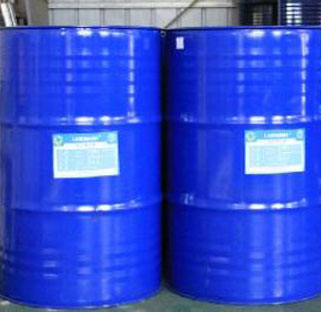
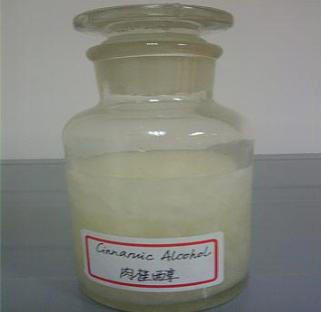
Cinnamyl alcohol also known TRANS-CINNAMYL ALCOHOL. Cinnamyl alcohol has a pleasant, floral odor and bitter taste.
Cinnamyl alcohol is prepared on an industrial scale by reduction of cinnamaldehyde. Three methods are particularly useful:
1) In the Meerwein–Ponndorf reduction, cinnamaldehyde is reduced to cinnamic alcohol (yield about 85%) with isopropyl or benzyl alcohol in the presence of the corresponding aluminum alcoholate.
2) A 95% yield of Cinnamyl alcohol is obtained by selective hydrogenation of the carbonyl group in cinnamaldehydewith, for example, an osmium–carbon catalyst.
3) High yields of Cinnamyl alcohol can be obtained by reduction of cinnamaldehyde with alkali borohydrides. Formation of dihydrocinnamic alcohol is thus avoided.
Premium quality Cinnamyl alcohol with Fused Low Melting Crystalline Solid, Odowell Cinnamyl alcohol with high quality in stock and free Sample for testing. Production capacity: 150 Tons annually manufacturing for European countries and American market.
Cinnamic acid (Specification)
|
Product Name: |
Cinnamyl alcohol |
|
Synonyms: |
TRANS-CINNAMYL ALCOHOL;TRANS-3-PHENYL-2-PROPEN-1-OL;3-HYDROXY-1-PHENYL-1-PROPENE;3-PHENYLPROPENOL;3-PHENYLALLYL ALCOHOL;3-PHENYLALLYLOL;3-PHENYL-2-PROPEN-1-OL;3-PHENYL-2-PROPENE-1-OL |
|
CAS: |
104-54-1 |
|
MF: |
C9H10O |
|
MW: |
134.18 |
|
EINECS: |
203-212-3 |
|
Product Categories: |
Benzhydrols, Benzyl & Special Alcohols;Pharmaceutical Intermediates;chemical reagent;pharmaceutical intermediate;phytochemical;Cosmetics;reference standards from Chinese medicinal herbs (TCM).;standardized herbal extract;104-54-1 |
|
Mol File: |
104-54-1.mol |
Cinnamic acid Feature And Application
Cinnamyl alcohol can exist in (Z)-[4510-34-3] and (E)-[4407-36-7] forms. Although both isomers occur in nature, the (E)-isomer is far more abundant and is present, for example, in styrax oil. (E)-Cinnamyl alcohol is a colorless, crystalline solid with a hyacinth-like balsamic odor.
Cinnamyl alcohol can be dehydrogenated to give cinnamaldehyde and oxidized to give cinnamic acid. Hydrogenation yields 3-phenylpropanol and/or 3-cyclohexylpropanol. Reaction with carboxylic acids or carboxylic acid derivatives results in the formation of cinnamyl esters, some of which are used as fragrance materials. Occurring as an ester or in the free state in hyacinth, Aristolochia clematis, Xanthorrhoea hastilis and in the essence of daffodil flowers. It is also reported found in guava fruit and peel, lemon peel oil, cassia leaf, Bourbon vanilla and cinnamon bark, leaf and root.
Cinnamic alcohol is a component in perfumed cosmetic products and deodorants; some perfumery uses (cinnamon; daffodil; hyacinth; jasmine); natural occurrence (cinnamon). Cinnamyl alcohol was used to study the alkylation of 2,4-di-tert-butylphenol by cinnamyl alcohol using aluminum-containing mesoporous ethane-silica catalyst. It was used to study gold nanoparticles supported on titanium dioxide catalysed oxidative coupling of alcohols and amines to form the corresponding imines. Cinnamyl alcohol is naturally occurring in cinnamon bark, it can also be synthetically manufactured. It is used in cosmetics as a fragrance or flavoring agent.In perfumery; as deodorant in 12.5% solution in glycerol.
Cinnamyl alcohol Details

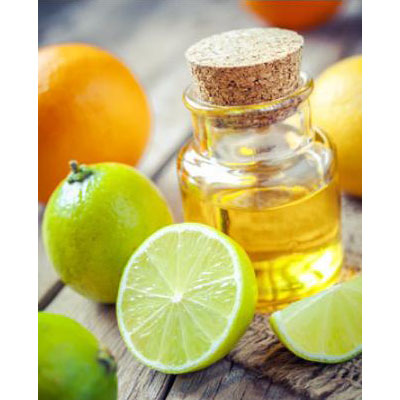

Chemical Properties
|
Melting point |
30-33 °C (lit.) |
|
Boiling point |
250 °C (lit.) |
|
density |
1.044 g/mL at 25 °C (lit.) |
|
vapor density |
4.6 (vs air) |
|
vapor pressure |
<0.01 mm Hg ( 25 °C) |
|
refractive index |
1.5819 |
|
FEMA |
2294 | CINNAMYL ALCOHOL |
|
Fp |
>230 °F |
|
storage temp. |
-20°C |
|
solubility |
H2O: soluble |
|
form |
Fused Low Melting Crystalline Solid |
|
pka |
0.852[at 20 ℃] |
|
Specific Gravity |
1.044 |
|
color |
White |
|
Odor |
at 100.00 %. sweet balsam hyacinth spicy green powdery cinnamic |
|
Odor Type |
balsamic |
|
Water Solubility |
1.8 g/L (20 ºC) |
|
Merck |
14,2302 |
|
JECFA Number |
647 |
|
BRN |
1903999 |
|
Stability: |
Stable. Incompatible with strong oxidizing agents. |
|
InChIKey |
OOCCDEMITAIZTP-QPJJXVBHSA-N |
|
LogP |
1.452 at 25℃ |
|
CAS DataBase Reference |
104-54-1(CAS DataBase Reference) |
|
NIST Chemistry Reference |
2-Propen-1-ol, 3-phenyl-(104-54-1) |
|
EPA Substance Registry System |
3-Phenyl-2-propen-1-ol (104-54-1) |
Safety Information
|
Hazard Codes |
Xn |
|
Risk Statements |
22-36/38-43-36 |
|
Safety Statements |
26-36/37-37/39-24-24/25 |
|
RIDADR |
2811 |
|
WGK Germany |
2 |
|
RTECS |
GE2200000 |
|
F |
10-23 |
|
TSCA |
Yes |
|
HS Code |
29062990 |
|
Hazardous Substances Data |
104-54-1(Hazardous Substances Data) |
|
Toxicity |
LD50 (g/kg): 2.0 orally in rats; >5.0 dermally in rabbits (Letizia) |
Quality Certificates
Our company meet the highest quality requirements as stipulated in ISO9001.
